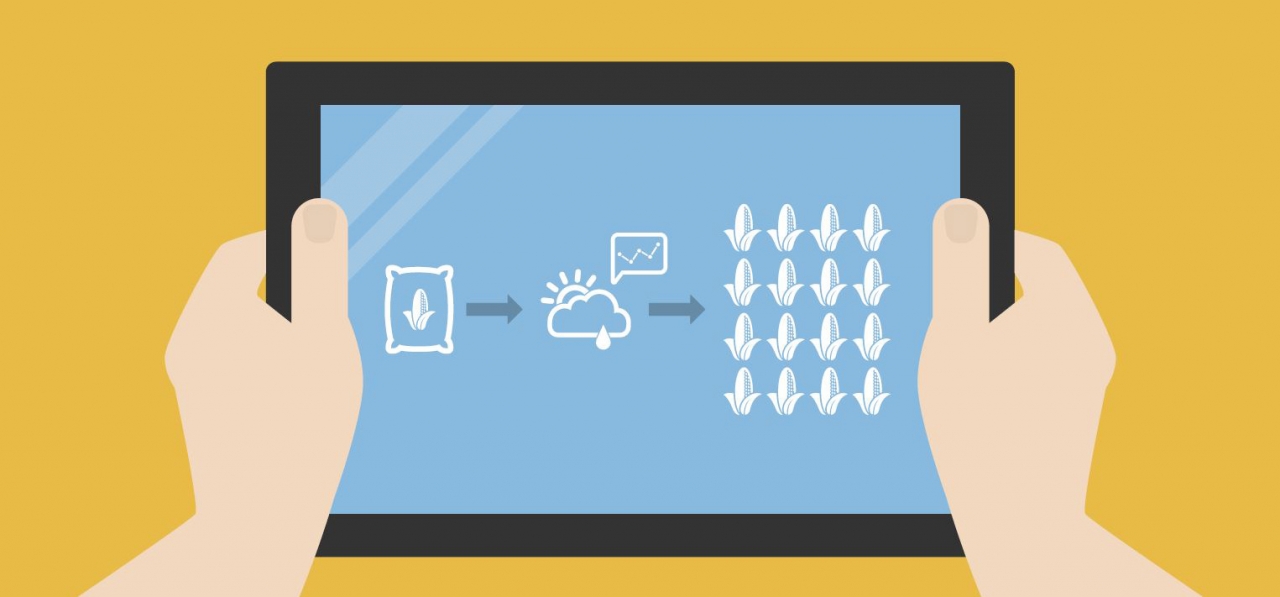Technology in Agriculture: How Has Technology Changed Farming?
Published 08-30-21
Submitted by Bayer

Agriculture technologies advanced rapidly in the second half of the 20th century and at the beginning of the 21st century. These developments forever changed the way farmers work.
Take a look at how farming technology has changed over the last 50 years.
1960s
The Green Revolution
In the mid-1940s U.S. Vice President Henry Wallace spearheaded a program to help developing nations feed their growing populations. The program included four scientists, one of whom was Dr. Norman Borlaug.
Borlaug started a growing process that allowed plants to thrive with new irrigation and crop management techniques. By the 1960s, the benefits of what was nicknamed the “Green Revolution” were apparent when successful new wheat varieties were made available in countries across the globe.
1974
Original single active ingredient Roundup® Herbicide released
A new herbicide using glyphosate as the active ingredient was developed. Glyphosate-based herbicide is used by farmers to control weeds in their crops. Roundup® branded glyphosate-based herbicides also made their way into lawn and garden products, which allow landowners to kill weeds along sidewalks, driveways, gardens, and fences.
1975
Rotary combines are introduced
The first twin-rotor system combine was created by Sperry-New Holland. This allowed the crop to be cut and separated in one pass over the field. For corn, it not only separated the husk and ears, but shelled the kernels, and chopped the stalks.
1982
First genetically modified plant cell
Scientists working at Monsanto Company became the first in the world to genetically modify a plant cell. The team used Agrobacterium to introduce a new gene into the petunia plant and announced their achievement the following year. Within five years, Monsanto researchers planted their first outdoor trials of a genetically modified crop – tomatoes that were resistant to Roundup agricultural herbicide, insects, or viruses. The Agrobacterium method first used in 1982 is still in use today by Monsanto scientists and by other companies’ scientists.
1994
Satellite technology advances farming
For the first time, farmers were able to use satellite technology to see their farms from overhead, allowing for better tracking and planning.
1996
Monsanto’s first GMO crops become commercially available
Roundup Ready®soybeans and Bollgard® insect-protected cotton became the first genetically-modified row crops available to farmers. The soybeans provided tolerance to glyphosate-based agricultural herbicide. The GM traits in cotton provided protection against the cotton bollworm, tobacco budworm, and pink bollworm.
2000s
Software and mobile devices helps farmers have better harvests
Like many people, farmers started carrying mobile devices, which allowed them to stay connected to colleagues while in the field. This also meant they now had access to data needed while on-the-go, including the ability to place orders for seed or fertilizer at any time or in any place.
2015
Data revolutionizes farming potential
Farmers make decisions based on the information they have on-hand, which is why data has helped them harness the power of information to make better-informed decisions that allow them to use resources more sustainably. The Climate Corporation’s Climate FieldView™ platform is a digital platform that brings together data collection, agronomic modeling, and local weather monitoring, which gives farmers a better understanding of their fields. These tools allow farmers to plan for better harvests and make decisions that are better for the planet.

Bayer
Bayer
Bayer: Science For A Better Life
Bayer is a global enterprise with core competencies in the Life Science fields of health care and agriculture. Its products and services are designed to benefit people and improve their quality of life. At the same time, the Group aims to create value through innovation, growth and high earning power. Bayer is committed to the principles of sustainable development and to its social and ethical responsibilities as a corporate citizen. In fiscal 2015, the Group employed around 117,000 people and had sales of EUR 46.3 billion. Capital expenditures amounted to EUR 2.6 billion, R&D expenses to EUR 4.3billion. These figures include those for the high-tech polymers business, which was floated on the stock market as an independent company named Covestro on October 6, 2015. For more information, go to www.bayer.com.
More from Bayer

